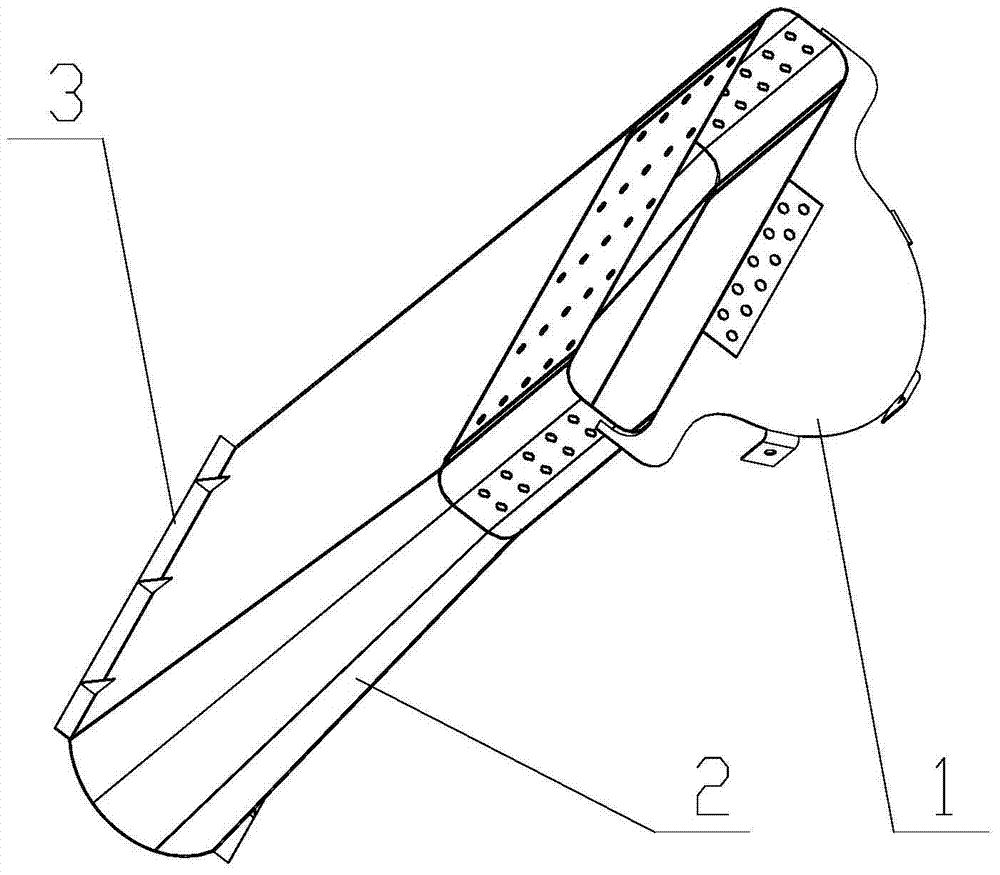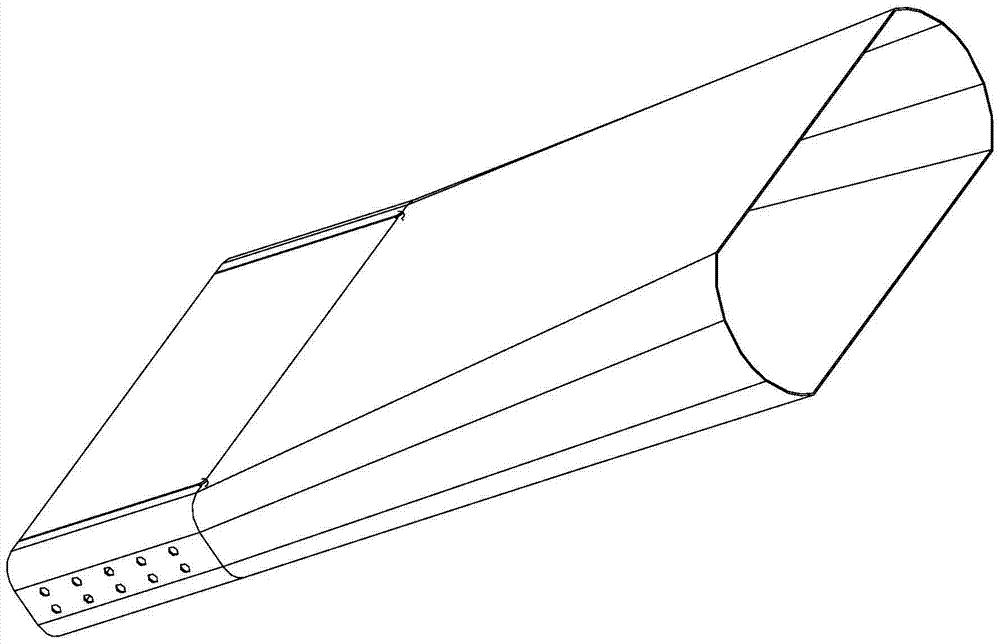Preparation method of composite thin-walled shell based on unloading holes
A technology of thin-walled shells and composite materials, which is applied in the field of preparation of composite thin-walled shells, can solve the problems of easy deformation of thin-walled shells, and achieve the effects of small deformation, short production cycle and good applicability
- Summary
- Abstract
- Description
- Claims
- Application Information
AI Technical Summary
Problems solved by technology
Method used
Image
Examples
Embodiment 1
[0043] The cover body 2 adopts a prefabricated unloading hole method, which greatly simplifies the structural form of the inner cover, effectively controls its maximum deformation, and eliminates the reinforcement ribs 3 at the distal end of the cover body 2 at the same time. The structure diagram of the cover body 2 after adding the unloading hole is as follows: Figure 5 Shown.
[0044] 1 Design and manufacture the forming mold of the cover body 2. The mold is a male mold, and the mold is made of metal material. The shape of the mold is consistent with the inner cavity of the cover body 2. Before use, apply a layer of fluorocarbon release agent on the working surface of the mold. And air-dry; the fluorocarbon release agent can be replaced by other release agents with a temperature resistance of not less than 140°C; if necessary, the mold can be heated to 50-60°C.
[0045] 2 Prepare Kevlar49 / 8D-1 plain weave fabric prepreg with a nominal thickness of 0.1mm. The resin content of t...
Embodiment 2
[0052] The cover 2 adopts a post-processing unloading hole method, which greatly simplifies the structure of the inner cover, effectively controls its maximum deformation, and eliminates the reinforcement ribs 3 at the distal end of the cover 2 at the same time. The structure diagram of the cover body 2 after adding the unloading hole is as follows: Figure 5 Shown.
[0053] 1 Design and manufacture the forming mold of the cover body 2. The mold is a male mold, and the mold is made of metal material. The shape of the mold is consistent with the inner cavity of the cover body 2. Before use, apply a layer of fluorocarbon release agent on the working surface of the mold. And air-dry; the fluorocarbon release agent can be replaced by other release agents with a temperature resistance of not less than 140°C; if necessary, the mold can be heated to 50-60°C.
[0054] 2 Prepare Kevlar49 / 8D-1 plain weave fabric prepreg with a nominal thickness of 0.1mm. The resin content of the prepreg is ...
PUM
 Login to View More
Login to View More Abstract
Description
Claims
Application Information
 Login to View More
Login to View More - R&D
- Intellectual Property
- Life Sciences
- Materials
- Tech Scout
- Unparalleled Data Quality
- Higher Quality Content
- 60% Fewer Hallucinations
Browse by: Latest US Patents, China's latest patents, Technical Efficacy Thesaurus, Application Domain, Technology Topic, Popular Technical Reports.
© 2025 PatSnap. All rights reserved.Legal|Privacy policy|Modern Slavery Act Transparency Statement|Sitemap|About US| Contact US: help@patsnap.com



